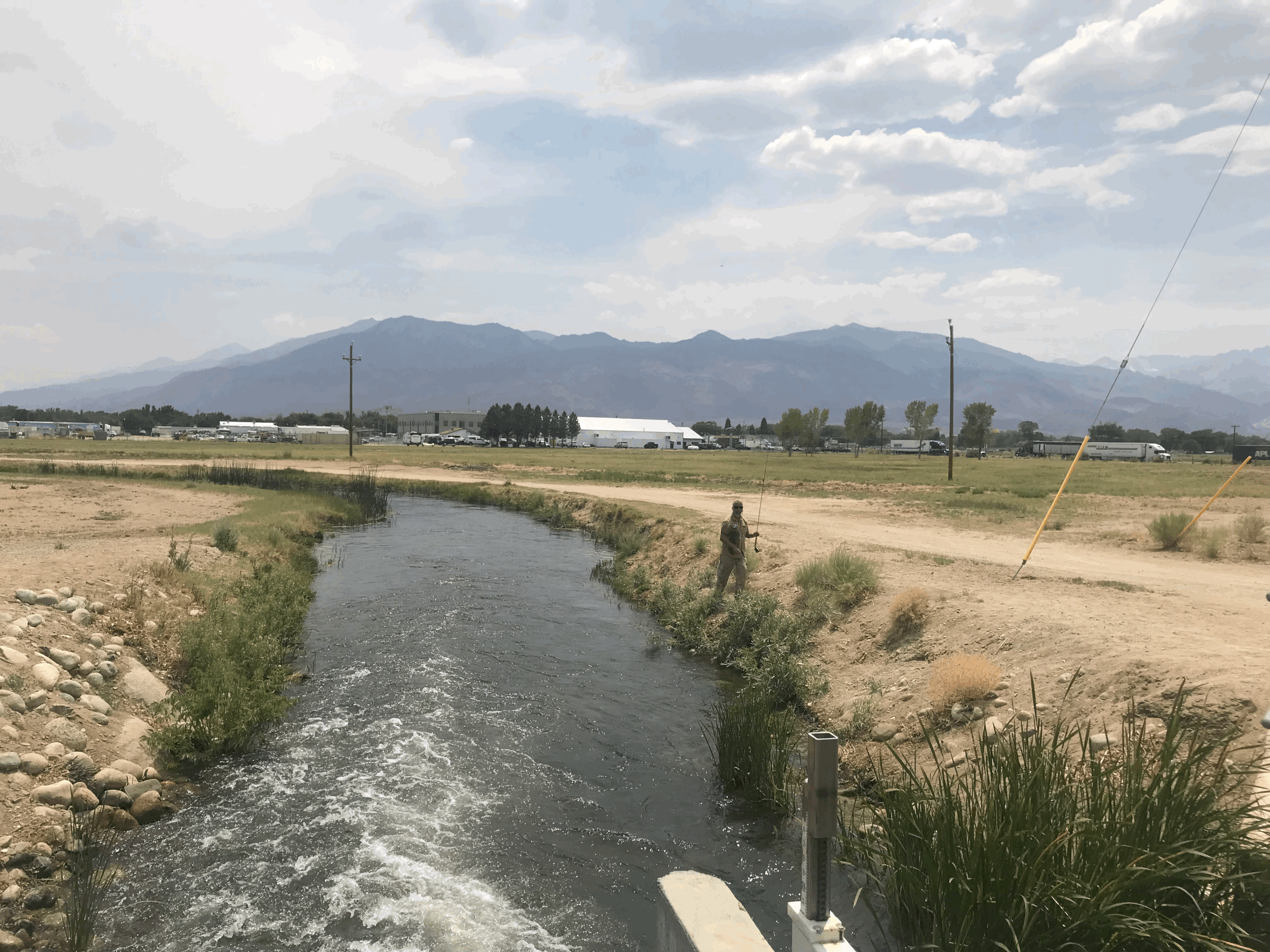Day light is getting shorter, the steams are cooling off, and the light snowpack is showing up in the form of low stream flows and low lake levels. Fly fishing pressure has slowed up as a lot of fly fishers are tied up with kids back in school. Smoke from California fires continues to fill Long Valley and the Owens Valley. It depends on the way the winds flow how heavy the smoke is on any given day. The hopper hatch this season has been dismal at best. Trico mayflies have stepped up and is what’s on the menu for trout in a number of moving waters in the Eastern Sierra. Fall is around the corner and the perfect time to chase trophy trout.
Lower Owens River Wild Trout Section:
Flows have stabilized at 225 CFS for the summer and should remain at these flows through fall. Mid-day temperatures of the mid 90’s is cool enough to fish to noon or to fish in the evening. Mornings have been the best with nymphs. Czech nymphing continues to be the most productive method of nymphing the wild trout section of the lower Owens River. Evening caddis activity has been slowing down.
Wild brown trout are the dominant species in the wild trout section of the lower Owens River.
Hot Creek:
Interpretive Site:
The trico hatch seems to be like the energizer bunny, going, and going, and going. This hatch is providing a couple of solid hours of dry fly activity every morning tell 10:30 or 11:00 A.M. Trico parachutes, trico spinner parachutes and trico spinners in size 24 are fooling the wild trout that are feeding on the trico mayflies. As the trico hatch wanes there is a sporadic caddis hatch. Once the hatches are over the surface activity comes to a halt and the creek is devoid of fly fishers by noon.
The Interpretive site is crowded in the mornings, but by noon the creek is devoid of fly fishers.
Hot Creek Canyon Section:
Morning caddis and trico activity is keeping fly fishers busy tell late morning. By noon hatches are over for the morning and fly fishers have left the creek in pursuit of other mid-day fly fisheries. Size 20 caddis including gray elk hair caddis, gray X-caddis and spent partridge caddis are producing trout mid-day. Mornings are all about trico’s with parachutes and spinners in size 24 producing wild trout. Weed beds are fully grown and fly fishers need to learn how to drift there flies in the narrow channels between the weed beds.
Upper Owens River:
Above Benton Crossing Bridge:
With the cooler mornings, some freezing mornings already on the upper Owens, hatches of trico mayflies are coming off a little later in the morning. The trico hatch is over by 11:00 A.M. Size 24 trico spinners are being taken for the real flies and producing fish up to 20 inches. The few hoppers still around on the upper Owens River are not getting active until late morning or early afternoon. I’m finding that bigger foam hoppers are spooking more trout than fooling trout. I’ve been throwing size 14 cream bodied parachute hoppers. This fly lands softer on the water and is fooling fish. The bulk of the trout are not taking the hopper flies so the key to success is to cover the water with just a couple of casts and keep moving until you can find a trout that knows what a hopper is. Best success has come from drifting the parachute hopper right next to the cut banks.
Smokey horizons are common every afternoon on the upper Owens River.
Bishop Creek Canal Behind the Ford Dealer:
With cooler morning temperatures the trout in the Bishop Creek Canal have been feeding on the trico hatch witch is over by 9:30 A.M. The fish have been ignoring the trico dun and concentrating on the trico spinner. The spinner fall is short live, but the trout are coming to the surface to feast on the dead spinners. Nymphing with the Czech rod is producing wild brown trout and stocker rainbows. By mid-day the fly fishing action is over.
The faster moving sections of Bishop Creek Canal are a great place to practice your Euro nymphing skills.
San Joaquin River:
The San Joaquin River is a free stone river that is suffering from the low snow pack of last winter. The water levels are low and the bigger fish are concentrated in the pools. A dry fly or a dry and dropper rig is still the best way to fish this watershed. In this low water conditions fly fishers need an accurate cast and a drag free drift. Size 14 and 16 elk hair caddis, royal Wulff, and Adams parachute are my go to dry fly. A size 14 or 16 gold ribbed hare’s ear is my preferred dropper fly.
Wading upstream casting to the pocket water with a dry fly is the most productive method for fly fishing the San Joaquin River.





